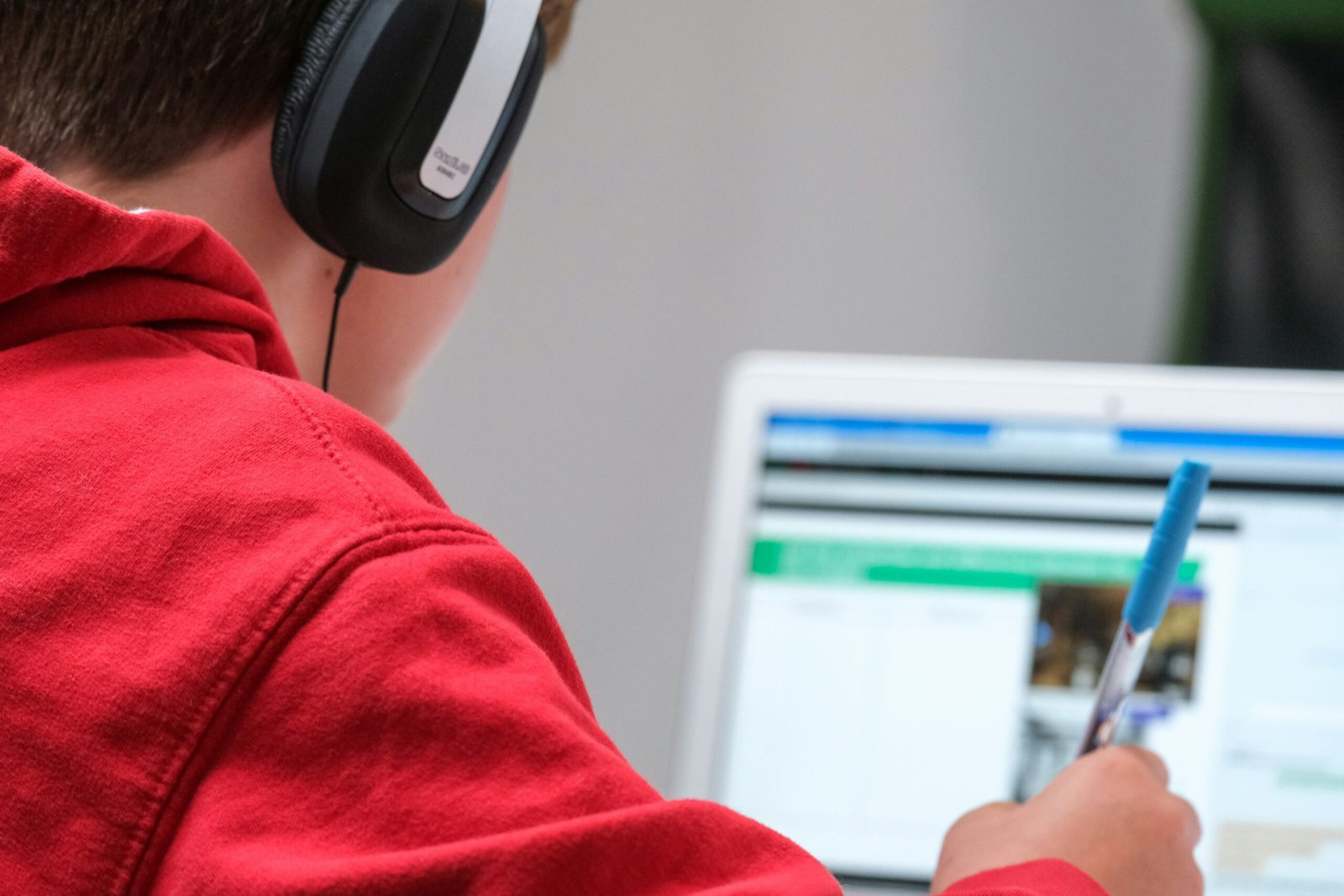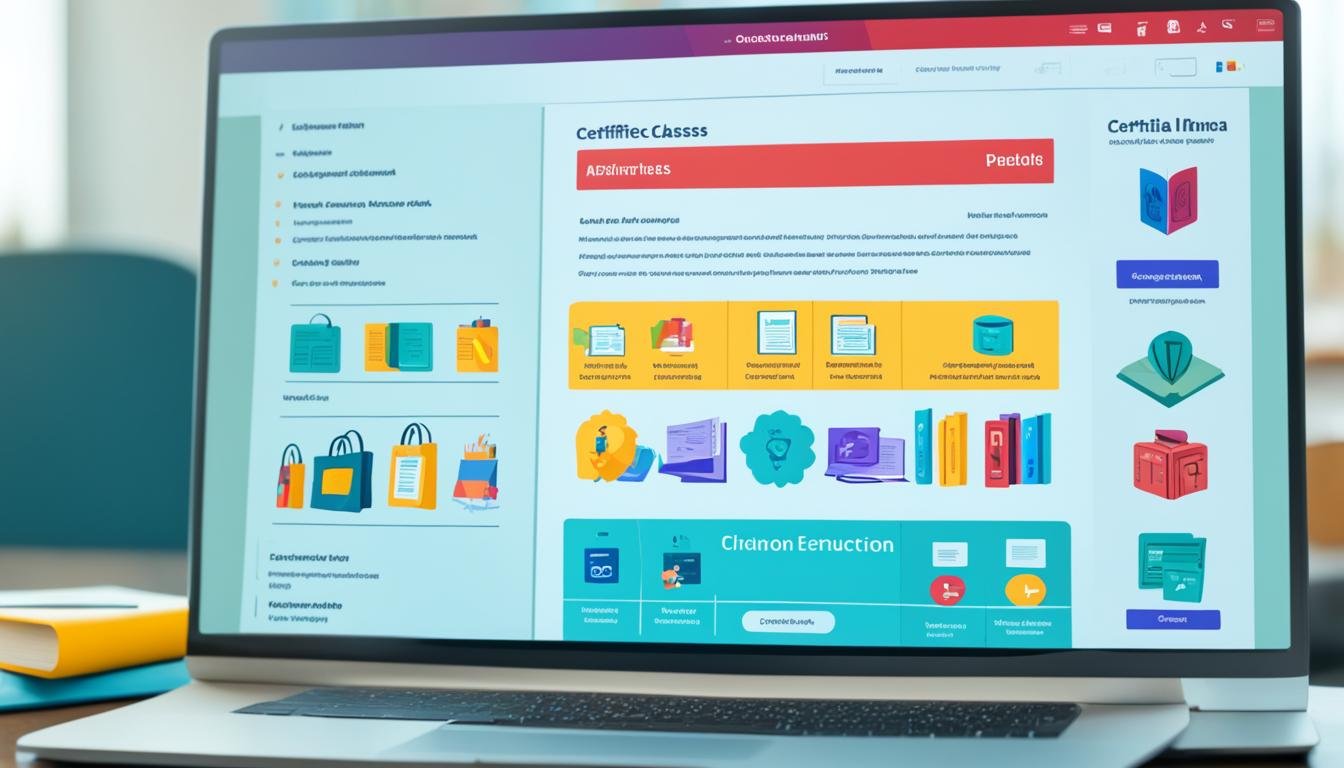As technology continues to evolve, so does the way we learn. Blended learning is an educational approach that combines traditional in-person instruction with online and digital learning. This method allows for a more flexible and personalized learning experience, creating a more engaging and effective learning environment for students.
In this article, we will explore the benefits of blended learning, including its ability to create interactive and personalized learning experiences, increase student engagement, and improve learning outcomes.
Key Takeaways:
- Blended learning combines traditional in-person instruction with online and digital learning.
- Blended learning creates a more flexible and personalized learning experience.
- Blended learning increases student engagement through interactive and collaborative activities.
- Blended learning leads to improved learning outcomes and academic success.
The Benefits of Blended Learning
Blended learning combines in-person and online instruction, providing students with the flexibility and convenience of online learning while still benefiting from face-to-face interaction with instructors and peers. Here are some of the key benefits of blended learning:
Flexibility of Online Learning
With blended learning, you have the flexibility to learn at your own pace and on your own schedule. Online learning allows you to access course materials from anywhere, at any time, as long as you have an internet connection. This means you can easily fit your studies around work, family, and other commitments.
Combination of In-Person and Online Instruction
Blended learning offers the best of both worlds by combining the advantages of in-person instruction with the flexibility of online learning. You get to interact with instructors and peers in a real classroom setting, while still having access to online resources, activities, and assessments.
Effective Use of Technology in Digital Learning
Blended learning makes effective use of technology, providing you with access to a wide range of digital learning tools and resources. These include multimedia content, interactive activities, and collaborative tools that make learning more engaging and interactive.
- Online polls and surveys
- Quizzes and assessments
- Discussion forums
Improved Learning Outcomes
Blended learning has been shown to improve learning outcomes compared to traditional classroom instruction. By providing you with a personalized learning experience that combines the best of in-person and online instruction, blended learning can help you achieve better academic results and gain the skills you need to succeed in your career.
When it comes to distance learning, blended learning can be especially effective as it provides you with the support and structure you need to succeed, while still giving you the flexibility to learn from anywhere.
In short, blended learning helps you get the most out of your education by combining the benefits of in-person and online instruction. It allows you to learn in a way that suits your individual needs and preferences, while still benefiting from the guidance and support of experienced instructors.
The Benefits of Blended Learning
Blended learning offers a variety of benefits that make it an increasingly popular approach to education. By combining online and in-person instruction, blended learning allows for more flexible and personalized learning experiences that can lead to improved outcomes. Here are some of the key benefits:
- Flexibility: Blended learning allows for a mix of online and in-person instruction, providing students with more flexibility in how, when, and where they learn. This can be especially beneficial for students who have busy schedules or live far from school.
- Interactivity: By using technology, blended learning can offer more interactive learning experiences and activities that can help students better engage with the material.
- Personalization: With blended learning, students can often progress at their own pace and receive personalized instruction and support tailored to their individual needs and learning styles.
- Access to a wider range of courses: Blended learning makes it possible for students to take courses that may not be available in their local area. They can access online courses or work with a remote instructor or tutor.
- Cost-effective: Blended learning can be a more cost-effective approach to education, as it often involves fewer resources, such as textbooks and classroom space, than traditional in-person instruction.
Overall, blended learning offers a flexible and effective approach to education that can help students achieve their goals. By combining the best of online and in-person instruction, blended learning provides a personalized and interactive learning experience that can help students succeed.
The Benefits of Blended Learning
Blended learning offers many advantages when it comes to enhancing student engagement and learning outcomes. Here are some of the key benefits:
- Flexibility: Blended learning allows you to take advantage of online and virtual learning opportunities, giving you the flexibility to learn on your own schedule and at your own pace.
- Hybrid Learning: Blended learning combines the best of online and in-person instruction, providing you with a more comprehensive learning experience that takes advantage of different learning modalities.
- Personalization: Blended learning uses technology to personalize your learning experience, adapting to your unique needs and learning style.
Through blended learning, you can interact with your course material in new and exciting ways, increasing your engagement and retention of new information. Additionally, blending online and in-person instruction leads to improved learning outcomes, especially when it comes to distance learning.
“Blended learning is a game-changer when it comes to increasing student engagement and improving learning outcomes. By integrating technology into the learning experience, students are given the tools they need to succeed in today’s fast-paced world.”
By taking advantage of the benefits of blended learning, you can enhance your education and prepare yourself for success in the future.
The Benefits of Blended Learning
Blended learning has become increasingly popular due to its flexibility and the use of technology in education. Here are some of the benefits of blended learning:
- Online learning: Blended learning allows for online learning, which offers flexibility for students to learn at their own pace and convenience. It also gives the opportunity for students to review the material as many times as needed.
- Virtual learning: Virtual learning provides the opportunity for students to attend classes remotely, which is especially important for students who may not be able to attend classes in person due to various reasons.
- Hybrid learning: Hybrid learning combines in-person and online instruction, providing the best of both worlds. It allows for face-to-face interaction with teachers and classmates while also providing the convenience of online learning.
- Digital learning: Technology is integrated into blended learning, providing students with access to a range of digital resources, such as videos, podcasts, and online simulations.
By utilizing blended learning, students gain access to different types of learning environments, which can help them better retain and apply knowledge.
Improved Learning Outcomes
Blended learning has been shown to result in improved learning outcomes compared to traditional classroom learning. Studies have shown that students in blended learning environments tend to perform better on standardized tests and retain information better than students in traditional classroom settings.
One of the primary reasons for this is that blended learning allows for a more personalized learning experience. Students are able to learn at their own pace and receive individualized instruction, which has been shown to improve learning outcomes.
Furthermore, blending online and in-person instruction allows students to receive immediate feedback on their work, which can help them improve more quickly than in traditional classroom settings.
Overall, blended learning offers a variety of benefits to students and can lead to improved learning outcomes. As technology continues to advance, it will be interesting to see how blended learning continues to evolve in the coming years.
Conclusion
Congratulations! You’re now equipped with a better understanding of blended learning and how it enhances education through technology. By combining in-person and online instruction, blended learning offers various benefits, including flexibility, personalized learning experiences, increased engagement, and improved learning outcomes.
Whether you’re a teacher, student, or parent, incorporating blended learning into your educational experience can be incredibly beneficial. With the help of technology, it’s easier than ever to create interactive and engaging learning environments that cater to individual needs and learning styles.
So why not give blended learning a try? Whether it’s through online courses, virtual classrooms, or hybrid learning models, there’s no doubt that technology can help to enhance education and improve learning outcomes.




